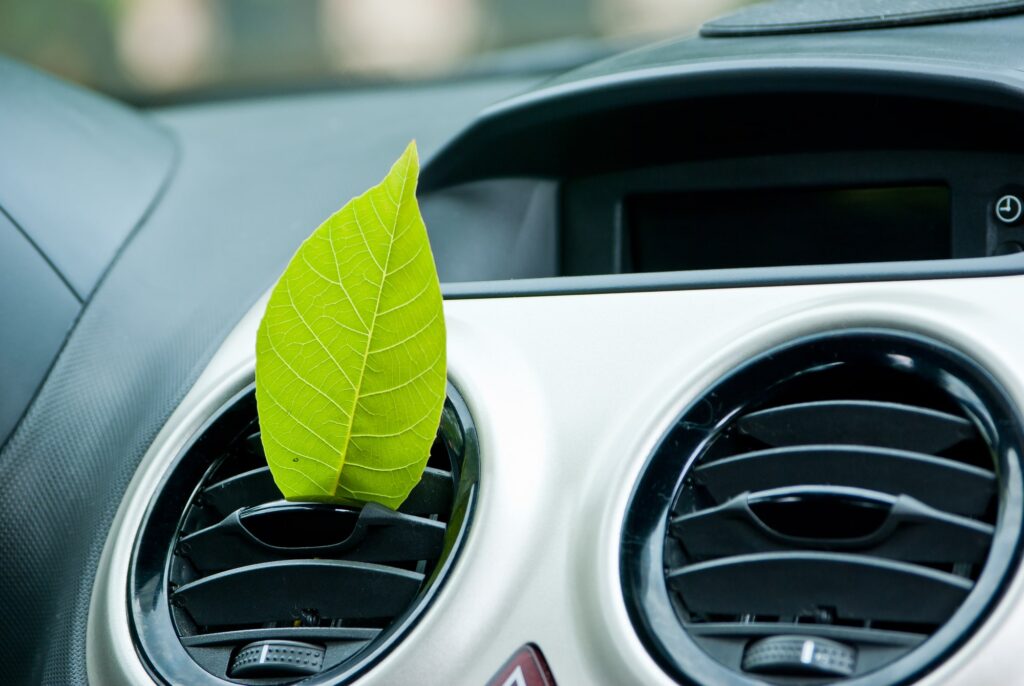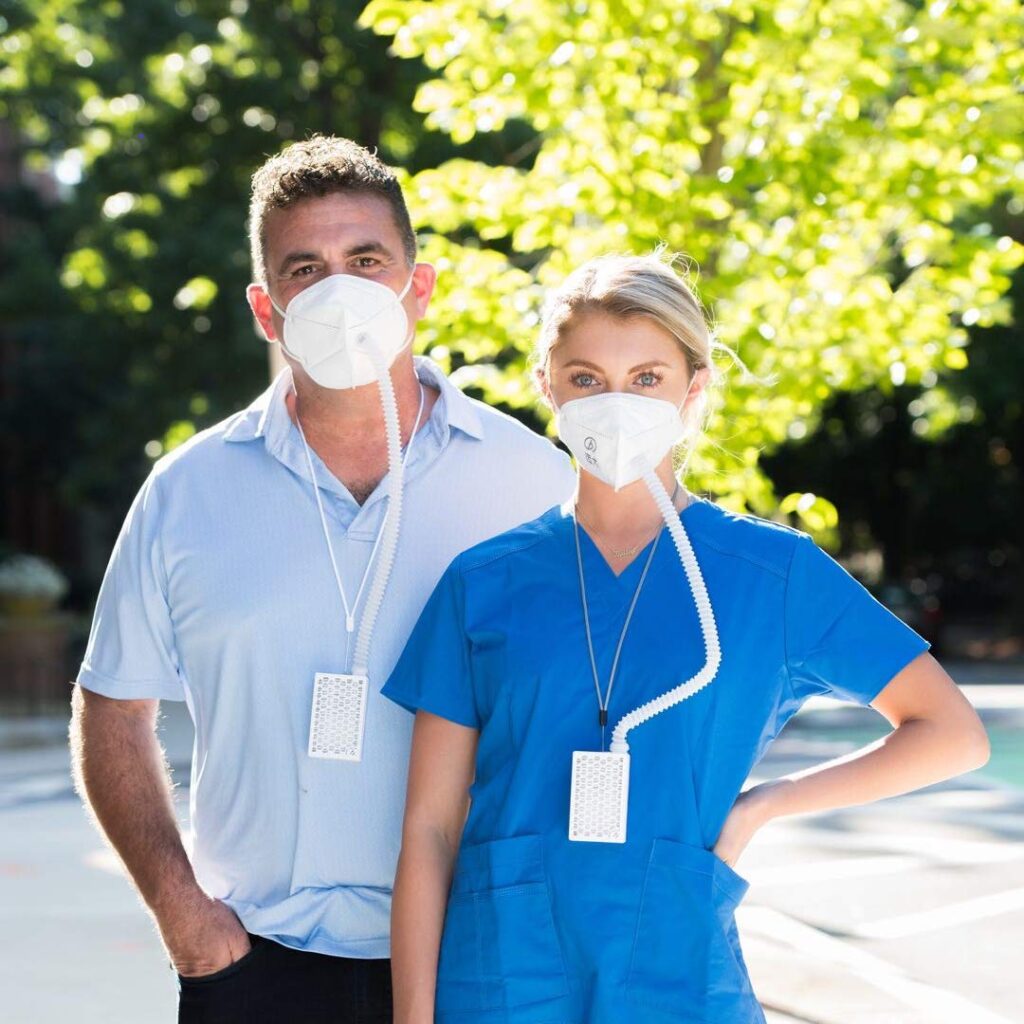
Very few people consider air purifier filter replacement costs and availability before making their purchase. The majority of them don’t even realize the importance of these variables until their machines give them the filter change alerts.
We’ve come across countless complaints (online and in-person) of people struggling to replace the air filter of their purifier. In fact, this is such a common question and concern when it comes to air purifiers that we decided to create a guide exclusively on replacement air purifier filters.
If you have any questions, concerns, or problems about the filters in your air purifier, we guarantee that you’ll find the right answer, information, or solution for it in this guide.
Here’s everything we’ll be covering on this page arranged in a simple, clickable format.
- Are HEPA Air Purifier Filters Necessary?
- Can Air Purifiers Stop Covid19?
- How Does an Air Filter of a Purifier Work and Why Should You Replace it Regularly?
- How Long Does an Air Filter in Purifier Last?
- How To Make Your Filter for Air Purifier Last Long
- How Will You Know That You Need an Air Purifier Filter Replacement?
- What Will Happen If You Don’t Change the Air Filter of your Air Purifier?
- How To Look for Air Purifier Filter Replacements?
- Should You Always Buy a Branded Replacement Filter for your Air Purifier?
- What is the Replacement Air Purifier Filter Price?
- Best Replacement Filters for Air Purifiers of Different Brands
- What If You Can’t Find a Replacement Air Filter for your Purifier?
Are HEPA Air Purifier Filters Necessary?
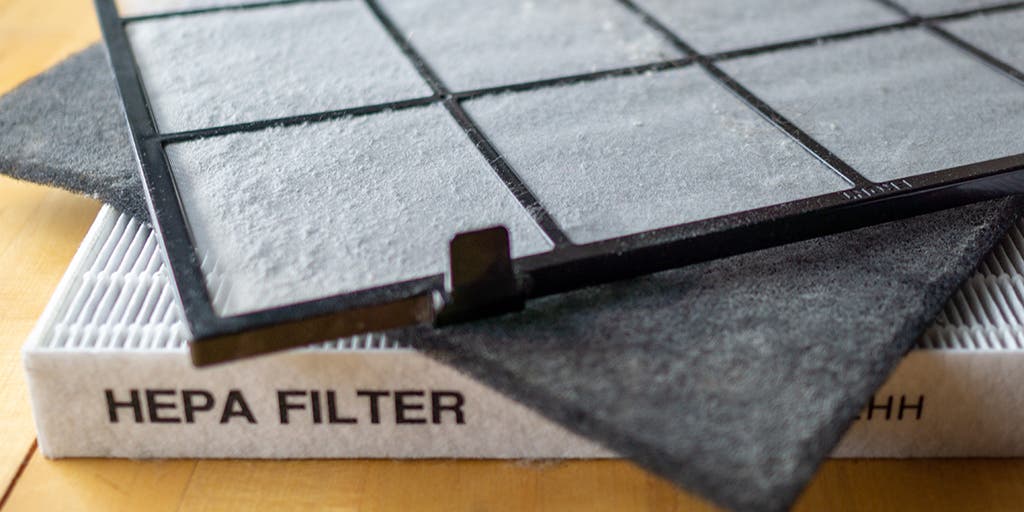

Did you know that HEPA air purifier filters are closely associated with the atom bomb? Yes, this is the same atom bomb that was used to level Hiroshima and Nagasaki to end the Second World War.
How? Do you ask?
Well, as the development of the bombs progressed during the Manhattan Project, researchers realized that small dust particles in the air were getting irradiated.
Naturally, these were proven to be harmful to the researchers. Therefore, the project needed a way to control these irradiated particles.
The precursor of the HEPA filter was developed to trap these particles and dispose of them in a safe manner. The filter was a derivation of the masks that US soldiers wore during the War to protect themselves from gas attacks.
In fact, the researchers not only developed the HEPA filter but also the first air purifier for the same reason. These early air purifiers were used in the American headquarters to keep the airborne irradiated particulate matter in check.
While the history lesson on HEPA is interesting, you’re probably asking why you need a HEPA air filter-based air purifier in India. After all, you don’t have any radioactive particulate matter in your home unless someone in your home loves gassy foods.
In a nutshell, HEPA filters are necessary because our air is now full of particulate matter of varying sizes. The bigger particles are tolerable since they’re trapped and held by your nose and throat. They never go deep into your lungs.
However, the natural protection inside our noses and throats can’t do anything about the smaller particulate matter i.e., PM2.5 and lower. Essentially, they’re too small to be trapped and sneak right into our lungs.
Over time, they can wreak considerable damage to not only our lungs but the rest of the body too. As this study explains from multiple different directions, particles less than 2.5 microns in size can penetrate so deeply into the lung that they can end up damaging its basic functionality.
This study cited multiple other studies spanning nearly 100 years. It collates some very interesting facts about the accumulation of PM2.5 and smaller particulate matter in our lungs too. Consider.
- Every time there is a 10 µg/m3 increase of PM2.5 (that’s micrograms per cubic meter), your respiratory mortality (that’s how likely you are to develop a terminal respiratory disease) goes up by 2.08%, and your chances of being hospitalized increase by 8%!
- Further, every time there is a 10 µg/m3 increase of PM2.5, your chances of dying go up by 4%, your chances of developing heart-related problems rise by 6%, and your chances of getting lung cancer increase by 8%.
- On the flip side, every time there is a 10 µg/m3 decrease of PM2.5, your life span goes up by 0.35 years (that’s just over three months).
According to scientists, PM2.5 causes damage in the lungs through free radical action and inflammation. The free radicals not only directly cause inflammation but also cause tissue damage and even affect cellular calcium concentrations.
The bottom line is this: HEPA air purifier filters are necessary because they filter out PM2.5 and smaller particulate matter from the air inside your home. The more you breathe in these small particles, the higher the chances of you getting sick and dying.
Can Air Purifiers Stop Covid19?
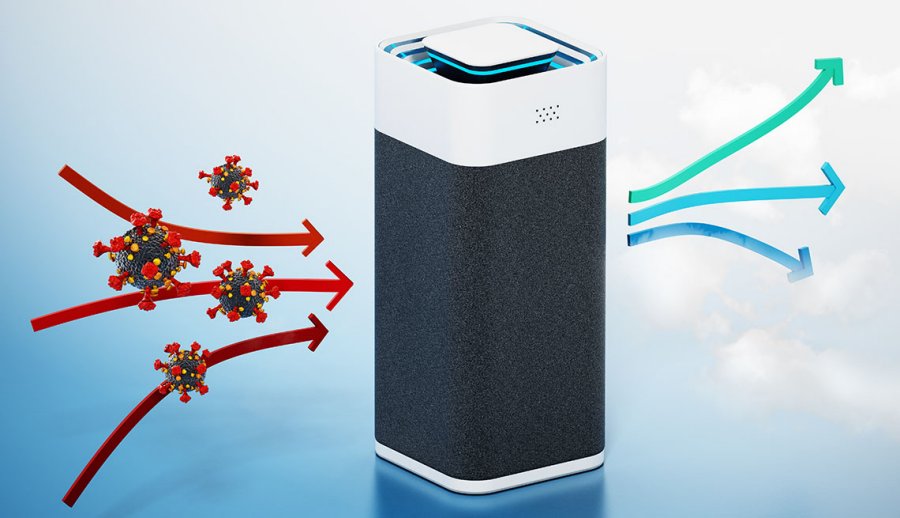

The answer to this question is a definitive “YES”. An air purifier with HEPA filter in India can be very effective against Covid19, especially in overpopulated areas. A recent report published in one of the most respected global journals Nature showed that HEPA filters along with ultraviolet sterilization can make a significant difference against airborne covid19 virus.
The study was conducted in a covid ward and a covid ICU. The scientists used air purifiers with HEPA and ultraviolet capabilities in both locations.
By monitoring the presence of the aerosol version of the virus on separate days, the scientists established that on the days that the air purifier was on, there were no viruses detected in the air.
On the days that the device was off, they detected the usual quantity of viruses in the air of the covid ward. It is worth pointing out that along with the covid19 virus, the scientists also saw a marked difference in other types of aerosol microorganisms such as bacteria.
In the ICU, the scientists didn’t notice a significant difference between days when the air purifier was on and when it was off. According to them, the reason is the already sterilized nature of the ICU and the fact that after the disease has progressed that far, viral replication is not as fast.
Therefore, if you’re concerned about the next covid variant entering your home, an air purifier with HEPA filter can be of great help. If you can get one that has a HEPA filter and UV sterilization, then it would be even better.
How Does an Air Filter of a Purifier Work and Why Should You Replace it Regularly?


HEPA or High-Efficiency Particulate Absorbing filters are, essentially, nets made up of extremely thin fibers. The difference is that the net is super-tight. The fibers are randomly arranged but very dense.
They are also pleated to increase the surface area through which the air has to pass through. This increases the efficiency of the filter because it improves its chances of trapping pollutants in a single pass.
The fibers in HEPA filters could be made up of any material but most of those found in air purifiers are based on synthetic substances such as nylon or polyester. Other materials that can be used include coarse glass fibers (Dyson), animal hair (bison), and even metal.
The intricate and dense nature of these fibers is the main reason why HEPA filters work so well. They work through three main mechanisms.
- Impaction; where a particle hits the fiber and gets trapped or embedded because it is too big to fit through the space.
- Interception; where a medium-sized particle has sufficient space to move through the fibers but gets too close to one and gets snagged.
- Diffusion; where the particle is super small but still runs into the fibers because it is pushed around randomly by gas molecules in the air.
In a nutshell, your HEPA filter traps pollutants.
Activated carbon filters work by adsorbing gases, odors, and Volatile Organic Compounds (VOCs) in the air. In simple terms, the pollutant comes through the activated carbon filter and gets attached to the individual carbon molecules.
In effect, an air purifier with an activated carbon filter and a HEPA filter purifies the air by trapping contaminants. What this means is that all the pollutants in your room get stuck inside the purifier.
Therefore, when your air filters get saturated, they become unable to purify the air further. More importantly, when the filters are saturated, they can release these pollutants back into the air, not unlike what happens when you wash your AC or air purifier pre-filter.
So, if you don’t replace your air filters regularly, you’re risking more exposure to the same pollutants that you’re trying to protect yourself from.
How Long Does an Air Filter in Purifier Last?
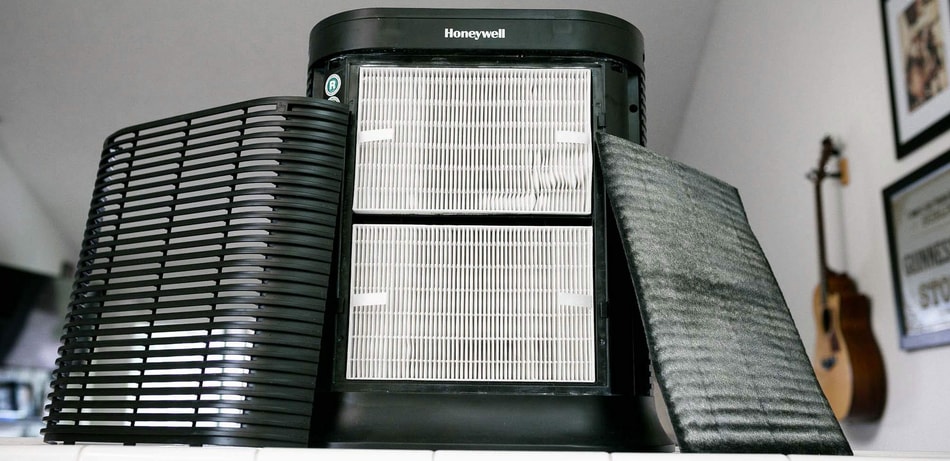

Different types of air purifier filters have different life spans.
For instance, pre-filters are made to last a really long time. In fact, pre-filters never need to be replaced unless severely damaged. However, they need to be cleaned regularly which is when you have to be careful not to damage them.
HEPA and activated carbon filters can last anywhere between 6 to 24 months.
You’re probably wondering why we’re giving such a big range when air purifier manufacturers categorically state the time when their filters need to be changed.
Moreover, air purifiers themselves come equipped with mechanisms that alert you when it’s time to change the filters. There’s a catch with these manufacture recommendations and filter change alerts, however. The catch is the inherent conflict of interest.
The sooner you change the filters the better it is for the manufacturer because that way maximizes their profits.
By giving you a fixed life span for their air purifier filters, manufacturers also free themselves of the hassle of explaining how complicated it can be to figure out the life of air filters. We’ll make the attempt, though.
So, the life of your air purifier filter regardless of whether it is HEPA or activated carbon depends on multiple factors. Let’s see each factor individually.
Grade / Density:
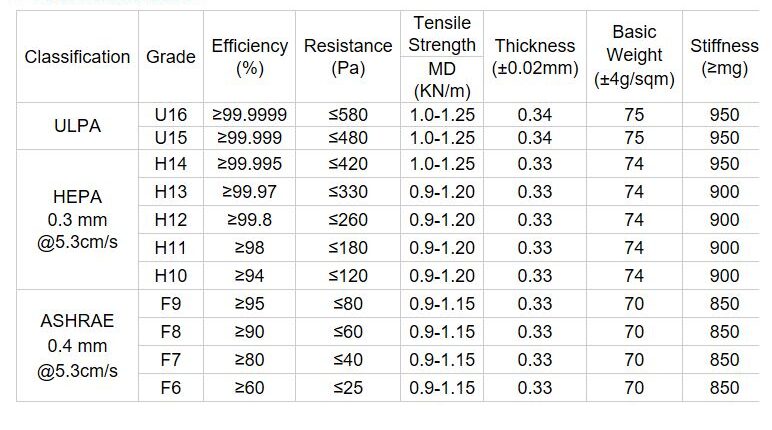

This factor basically boils down to the quality of the filters.
In terms of activated carbon filters, this would mean how many carbon particles are in the filter and how well-activated it is. Carbon gets activated i.e., its molecular structure changes when a certain amount of heat is applied to it.
Further, the type of carbon used also matters. The highest quality activated carbon filters utilize carbon from purer sources, don’t have impurities, and are activated under standard conditions.
Such filters, obviously, last longer.
HEPA filters come in different grades. The latest air purifier models in the market right now use H14 grade HEPA filters which are the most advanced and the densest.
You’ll also find devices with H13 grade HEPA filters simply because their manufacturers haven’t upgraded their systems yet. The older models, of course, will be based on H11 or H12 grade HEPA filters.
The densest HEPA air filters last the longest which is why the latest air purifier models with H14 grade HEPA filters say that their air filters will last for two years. The models that have been around a while and are using H13 grade HEPA filters claim a life of about 12 to 18 months while the oldest models say 6 to 12 months.
So, the higher grade a HEPA filter will last longer.
The design of the filters also matters. For instance, the circular combi-filters almost always last longer than the flat, separate filters.
Usage:
The life of the filter will also depend on how you use the air purifier.
This is simply a matter of how much air you’re pushing through the filter. The more you push through, the quicker the filter will get dirty and become unusable.
In practical terms, this means two things.
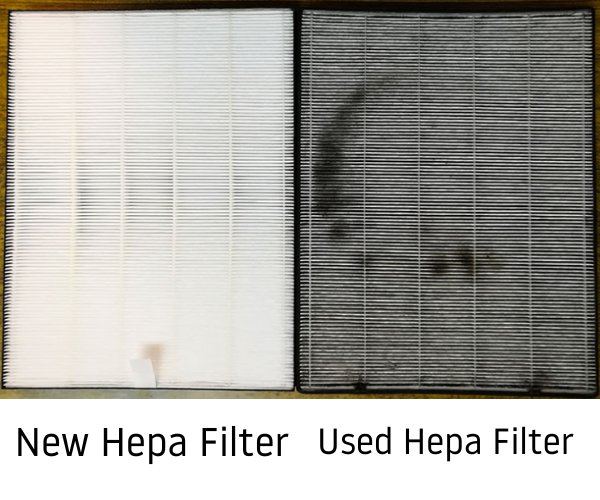

The first is how long you run the air purifier every day i.e., hours and the second is how hard you run it i.e., fan speeds.
The more you run it at higher speeds, the quicker it will need to be changed.
Pollution Levels:
Pollution levels will play a role too.
The higher the pollution levels, the more pollutants the filter will have to manage, and the quicker it will get dirty.
Since pollution levels vary from day to day and month to month, the speed with which the filter loses its life is not uniform either.
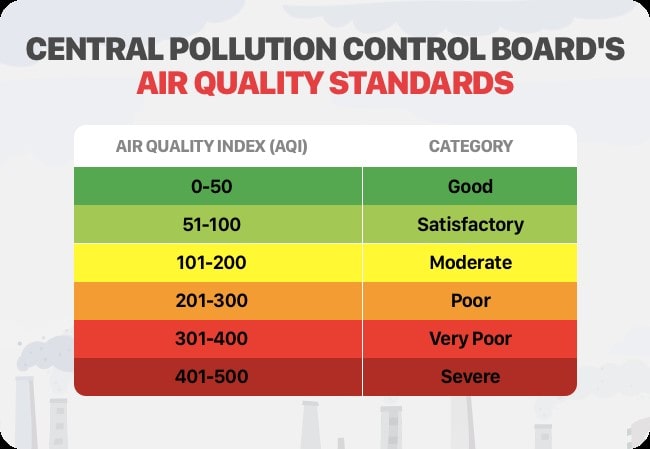

However, what you should know is that when we say “pollution levels”, we aren’t only talking about outdoor pollution. We’re also referring to indoor pollution. This includes everything from cooking and cleaning to the use of incense and perfumes.
State Of the Pre-Filter:
The pre-filter is there to block PM10 from reaching the carbon or HEPA filter.
The cleaner it is the better it will protect the finer filters.
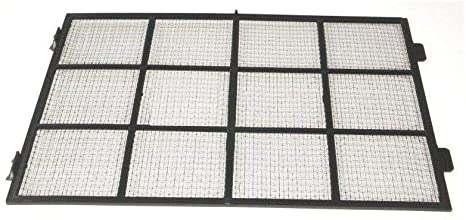

This is why we recommend cleaning the pre-filter at least every 10 days if not every week. If you do this then the activated carbon and HEPA filters will last longer.
How To Make Your Filter for Air Purifier Last Long
So, if you clean your pre-filter regularly, then your activated carbon and HEPA filters will last longer.
However, how long will depend on how regularly and how well you clean your pre-filters.
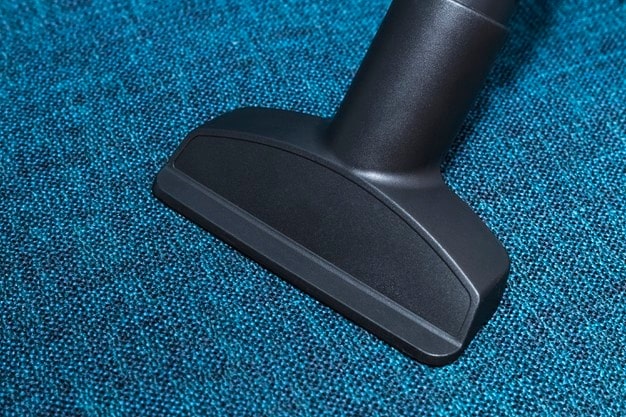

We suggest vacuuming the pre-filter, dusting it outside, and then washing it with soap water to have the maximum impact on the life of your other filters.
Apart from cleaning your pre-filter regularly, there are other things you can do to increase the life of your air purifier filters too. These are.
Keeping Your Doors and Windows Shut
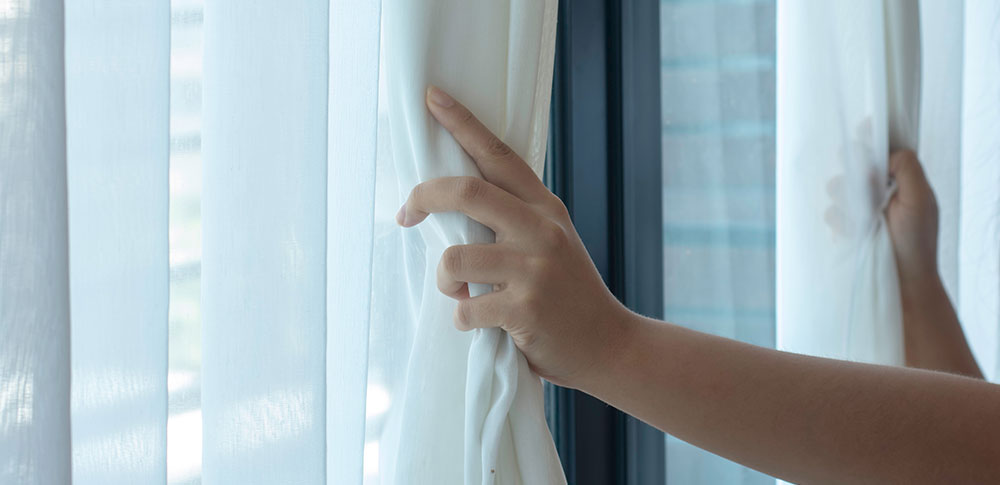

Some people feel that they need to open their doors and windows once a day. The habit comes from times when opening doors and windows meant getting fresh, clean air. However, maintaining the habit when conditions have clearly reversed isn’t advisable.
People who do this also say that they shut their air purifiers off when they do. What they don’t understand is that the purifier has purified the air in their homes already. By allowing this air to escape in lieu of polluted air, they’re asking their devices to do the work all over again.
Whether you turn off your purifier or not before opening your doors and windows, you’re putting more pressure on the filters in the air purifier.
In contrast, if you were to keep the doors and windows shut then your device will find it easier and your filters will last longer.
Sealing The Doors and Windows
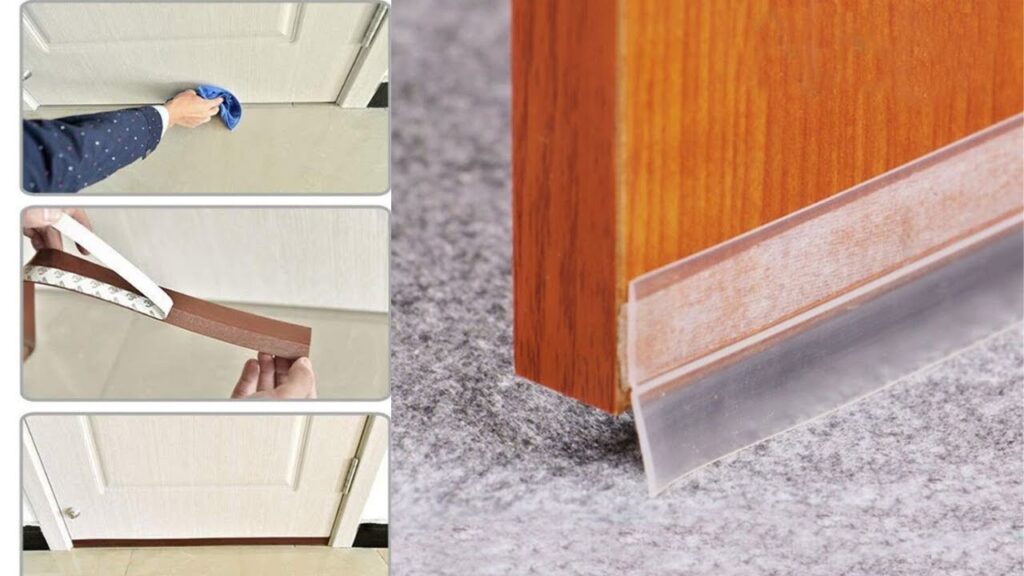

Even if you keep your doors and windows shut, some of the purified air in your rooms will still escape because homes are not designed to be air-tight. However, you can minimize the escape of purified air by sealing the space between the doors or windows and their frames.
Your home still won’t be air-tight but it will be better sealed which will make your air purifiers more efficient.
This is easier for people who live in modern homes with UPVC doors and windows. The reason for this is that UPVC doors and windows already have rubber linings.
In fact, you won’t need to install rubber linings if you live in a home with UPVC doors and windows. However, you will have to seal the bottom i.e., the space between the UPVC door and floor. The fitters leave a gap there so that the doors don’t get stuck.
It is also important to add that you use different items to seal windows and doors. With doors, you’ll have to prevent the air from escaping by getting door seals for the bottom of the door. With windows, you’ll need a foam or rubber lining.
We’ll deal with both these options one by one.
Door Seals
Door seals are what you use to block the space between the door and the floor while keeping the door functional.
Your local hardware store will have these door seals.
Before you go to them, though, measure the width of your doors so that you can have them cut the seals to the right size.
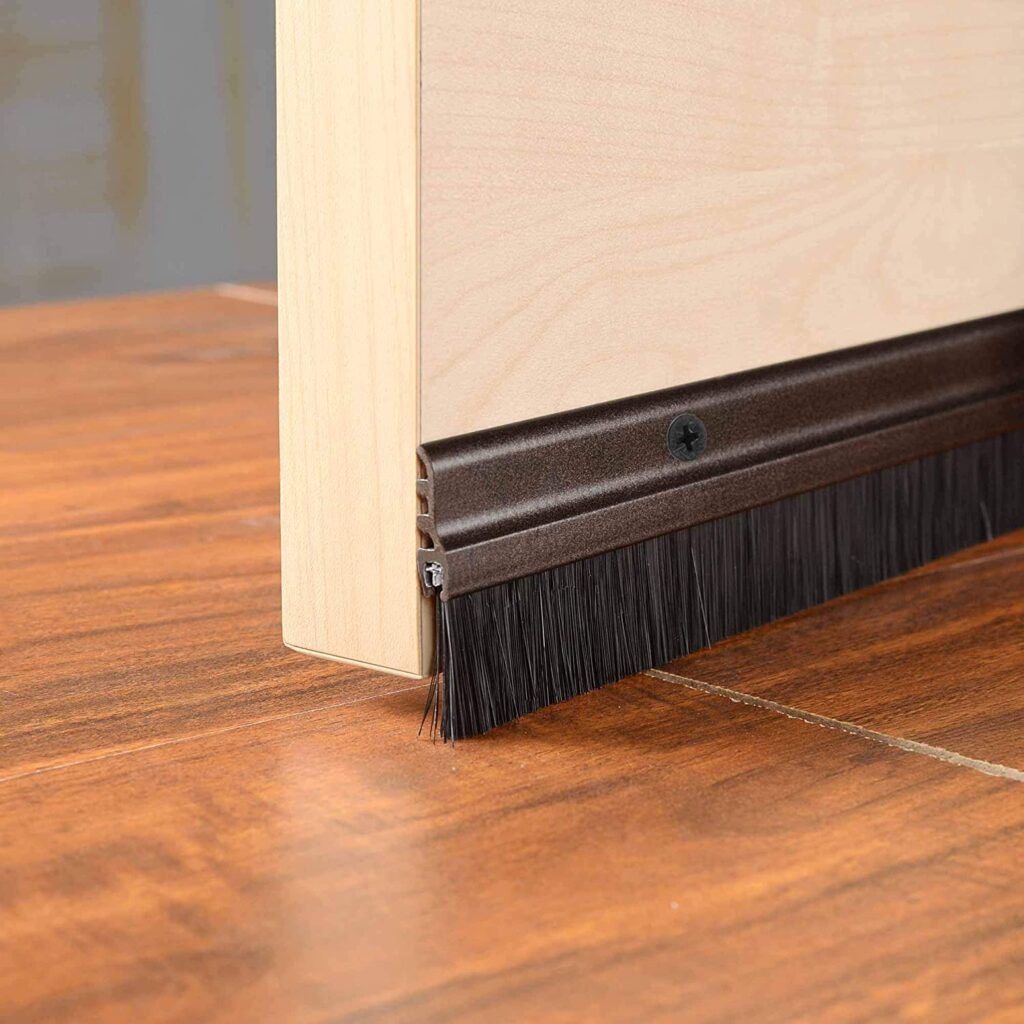

We also advise asking the store owner for someone to install the seals. While installing these seals is as easy as screwing it in, it does require some strength so you’ll be better off with a professional.
If you don’t want to go to the hardware store, these types of door seals are available online also. In fact, you’ll have a greater variety to choose from if you buy online. The only catch is that you’ll either have to install them yourself or call a carpenter to do the job.
As to what options you’ll have, there are three main types.
The Metal Strip Door Seal with Brush Bristles
The first is the standard metal strip that has a channel at the bottom. In the channel, another strip of brush bristles is inserted. This type of door seal is always screwed into the door.
On Amazon, it is available under the Deco Window brand. Locally, you’ll find other brands but the pricing may be slightly higher.
All Rubber Door Seal
The second is an all-rubber door seal that you won’t even have to screw in. It is adhesive-based and can simply be stuck to the bottom of the door.
The only problem with this door seal is that it may not last a long time.
Since it is a single-piece seal, every time you will open or shut the door, the part touching the floor will drag and put pressure on the entire thing.
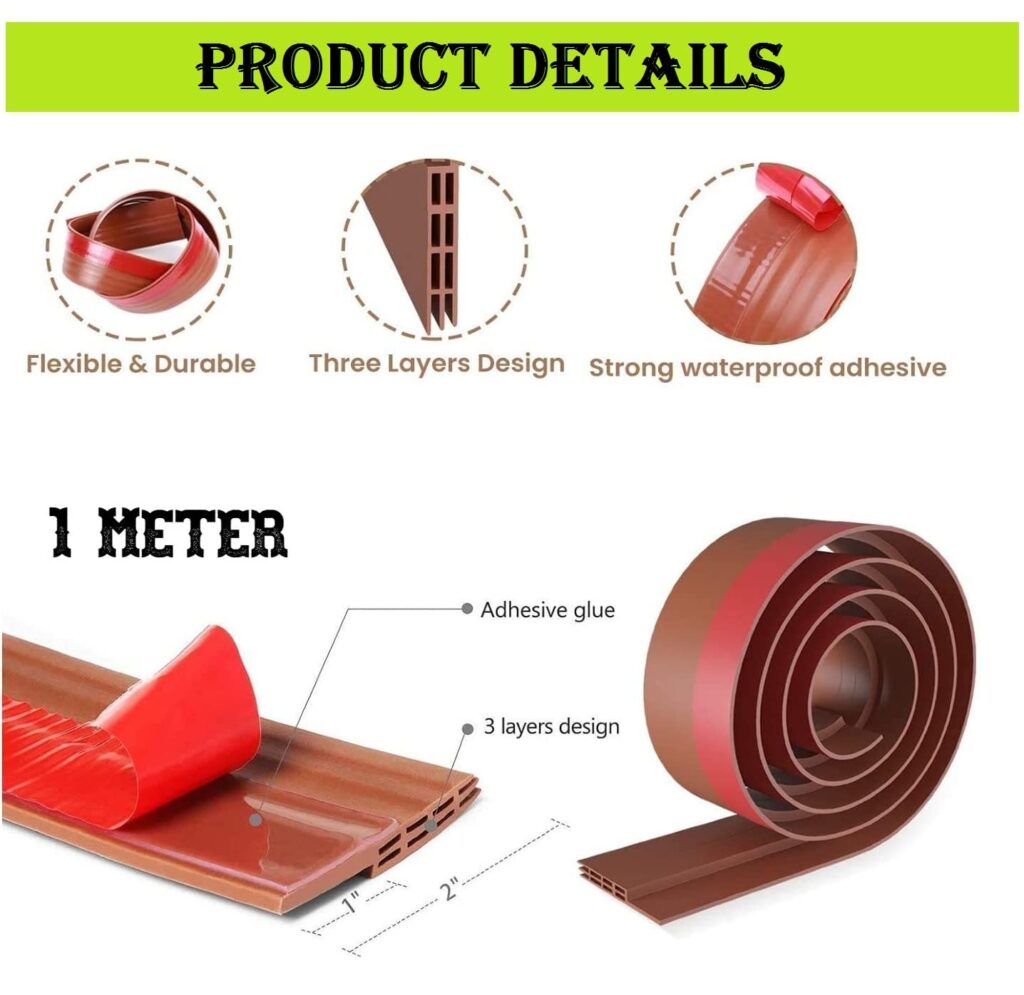

This can cause the adhesive to fail. However, if installed properly i.e., the contact point is clean, uniform, and wide enough, even this will not happen.
As it is, this is the most streamlined and simple option available currently. The best product we’ve found of this type is offered by Metreno.
Foam-Based Door Seal
The third variety is the simplest to install. It is made up of synthetic material with cylindrical holes on two sides.
You have to slide this seal under your door, cut the excess away, and then insert foam cylinders into the two cylindrical holes.
Apart from how easy it is to install; its other great quality is that it is washable.


You simply take it out, wash it, and put it back again.
This kind of door seal is not available in most local stores. So, you’ll only be able to buy it online.
Window Linings
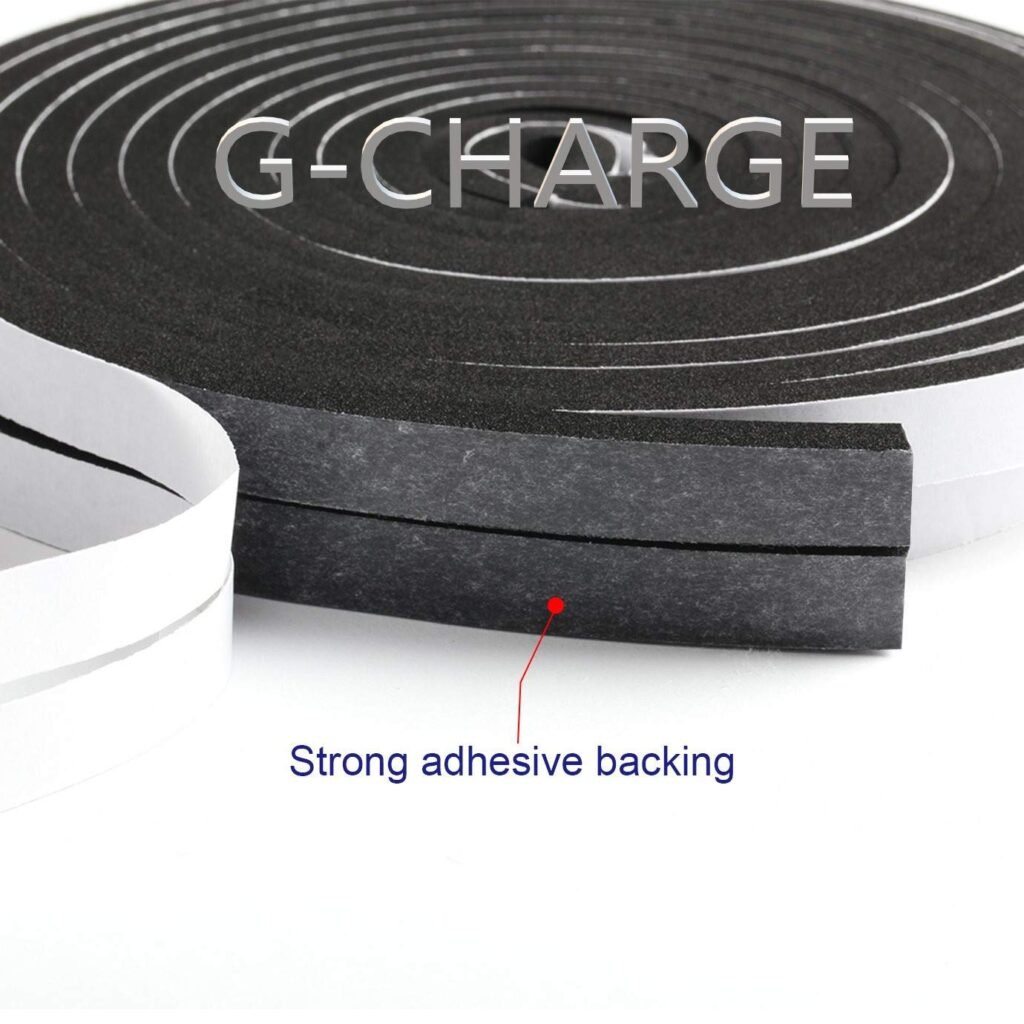

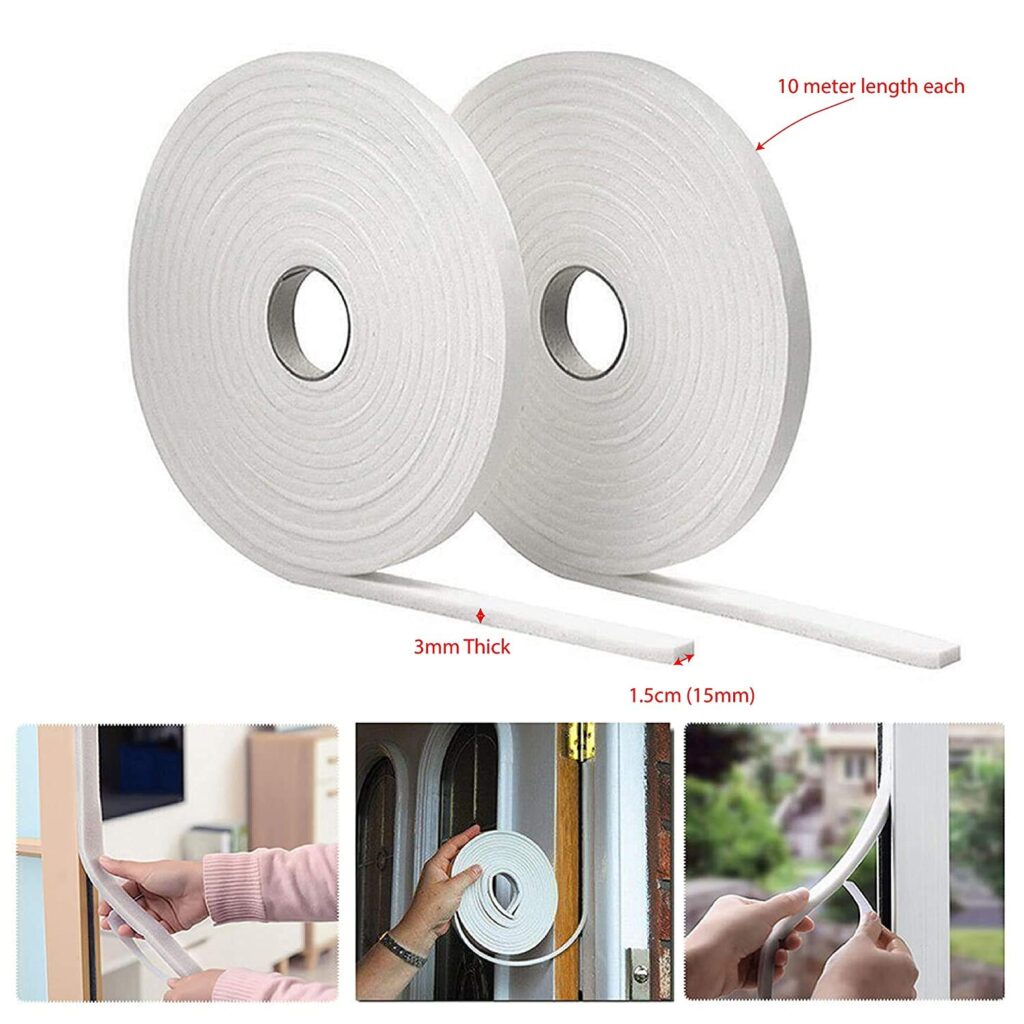

Window linings are mainly needed for homes that have wooden doors and windows.
They are pasted in the gap between the window and the frame around it. They come in rolls that can be snipped to fit different dimensions.
You can get them from your local hardware stores but their availability depends on how big or well-stocked a particular store is. Again, you’ll have more options if you shop online.
While you’re buying these, make sure to pay attention to the thickness of the lining as well as its width. Both will play a role in how well your window opens and closes.
The two best options we’ve found are the G-Charge Single Side High Density Self Adhesive Foam Seal Tape and the amiciCare Dust and Noise Insulating Form Self-Adhesive Doors Windows Rubber Gap Sealing Tape.
The G-Charge option is thicker while the amiciCare option is longer. Choose according to your specific requirements.
Avoiding Indoor Air Pollution
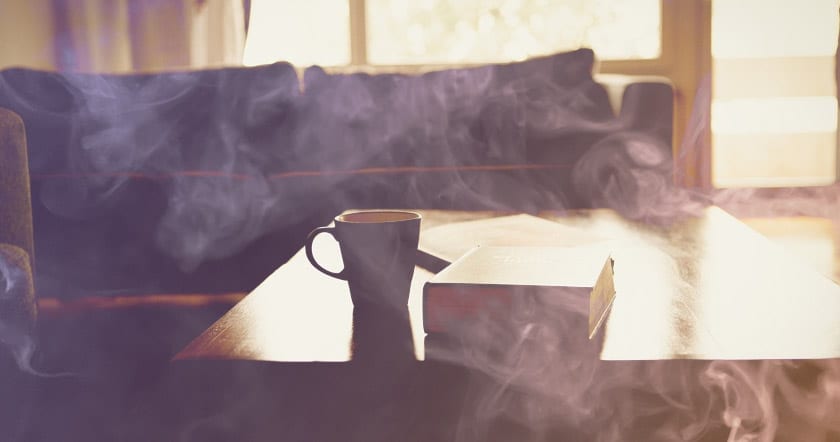

While all the above steps will help you keep outside pollution from entering your home, if you truly want to extend the life of your air purifier filter, then you’ll also have to take indoor air pollution into account.
Most statistics about indoor air pollution cite incredible medical drawbacks and focus on the use of solid fuels like wood, coal, or even dung cakes. This is why they don’t apply to owners of air purifiers like you.
However, even though indoor air pollution isn’t going to cause massive health problems for you, it will still impact the life of your air purifier filter. This is even though you won’t be using solid fuels.
You see, even something as simple as cooking can cause indoor air pollution.
Studies in India and Asia haven’t focused on indoor air pollution being caused by gas and electricity-based cooking. Therefore, we need to look at studies from the western world. The California Air Resources Board has conducted multiple studies of the kind of cooking that we’re considering here.
It clearly states that cooking not only generates air pollution from the fuel being used but also from the food being cooked.
For instance, the Board says that using a gas-fueled stove can result in the release of harmful pollutants like carbon monoxide and formaldehyde. We use LPG and CNG, so this applies to us.
Similarly, the Board says that even oils, fats, and other food items create unhealthy air pollutants especially when cooked at high heat. Indian food specifically makes use of a lot of oil, frying, sauteing, and spice tempering which is why this applies to us twice as much.
The only way to prevent indoor pollution caused by cooking is to use a chimney with a proper hood or to avoid cooking at high temperatures.
Moreover, Indians also tend to use incense during prayers, believing that this smoke purifies the home. Scientifically speaking, this doesn’t make sense because they’re expecting smoke to purify the home.
However, even if you don’t want to look at it scientifically, nowhere in the scriptures does it say that you need incense to feel close to God. The blessings from prayers to God are not dependent on incense.
Therefore, apart from using a chimney and cooking at low heat, not using incense is another thing you can do to prolong the life of your air purifier filters.
How Will You Know That You Need an Air Purifier Filter Replacement?
To know when you need replacement air purifier filters, you need to watch for three signs.
The obvious sign is the filter change alert from your air purifier.
Don’t worry about being too late for the change.
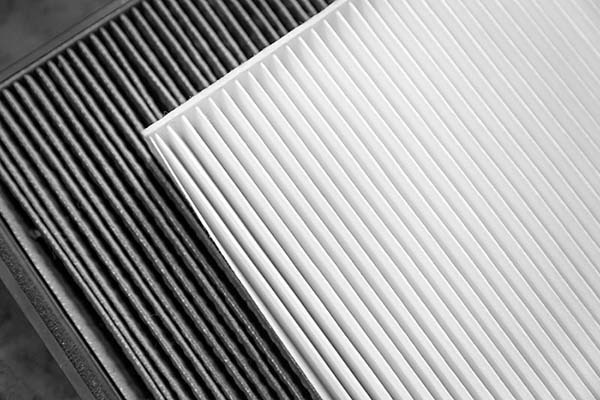

You can continue to run the air purifier even though it is giving you the filter change alert.
In fact, some people even make the alert go away and use the purifier until the next time the alert comes up.
Most filter change alerts are based on a basic timer i.e., they light up after a previously coded number of hours have elapsed. Many don’t even take into account the air quality in the room or even the speed at which the purifier was run.
Therefore, it is fairly safe to continue to use an air purifier filter through two different alerts. However, if you’re not going to listen to the air purifier, we recommend doing your own assessment.
This means keeping an eye out for the other two signs that you need a replacement air purifier filter.
The first is the appearance of the air purifier filter itself. When you get the filter change alert from your device, shut it off, and take the filter out.
You need to take it out of your home and gently tap it to get rid of the excess dust. Make sure you’re wearing a mask so that you don’t breathe in the PM2.5 particles.
Once you’ve done this very basic maintenance, look at the filter. If it is all black and there are no white strands or portions visible, then you need to change it. However, if you can see light (white strands) in the midst of all that darkness, then you can check for the third sign.
The third sign is the most sure-shot way to know that you need replacement air purifier filters. This is how quickly your air purifier can purify the air in your room.
As you use your air purifier, you’ll get a sense of how fast or slow it can purify the room’s air at different AQI levels. This sense will serve you well when it comes to figuring out if you need replacement air purifier filters.
An air purifier with an older filter will take longer to clean the air in the room than if it had a new filter.
Moreover, if the filter is really saturated then the air purifier can fail too. For instance, many people say that once their filters became old their air purifiers couldn’t bring down the room’s AQI below 50. This is common enough for you to consider it to be proven.
We think you shouldn’t change your air purifier filter without all three signs being visible.
There are multiple reasons for this.
- The first is that many manufacturers rely on the quick sale of air purifier filters to boost their profits.
- Another is that there’s no way for them to devise an alert system that will take into account everything from varying AQI levels, run speeds, run times, and even passive accumulation of PM2.5
To summarize, here’s the process you should ideally follow when trying to decide if you need replacement air purifier filters.
- Wait for the filter change alert.
- Visibly inspect the air filter for saturation by looking for white strands or portions.
- Time or tentatively assess if your air purifier is purifying your room’s air at the same speed as it did when it was new.
What Will Happen If You Don’t Change the Air Filter of your Air Purifier?
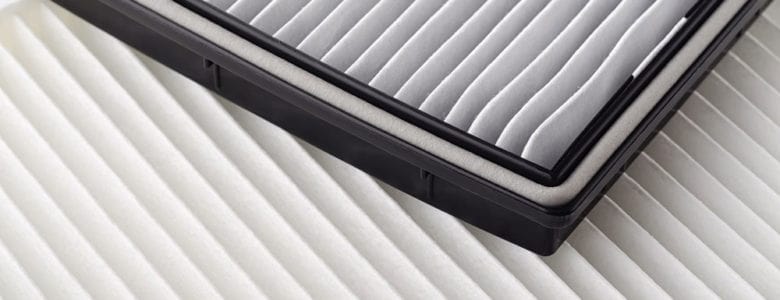

There’s a lot that can go wrong if you don’t change your air purifier filters after they’ve lost their functionality.
In fact, the situation can progressively get worse.
Let us explain.
Poor Quality Air in Your Home
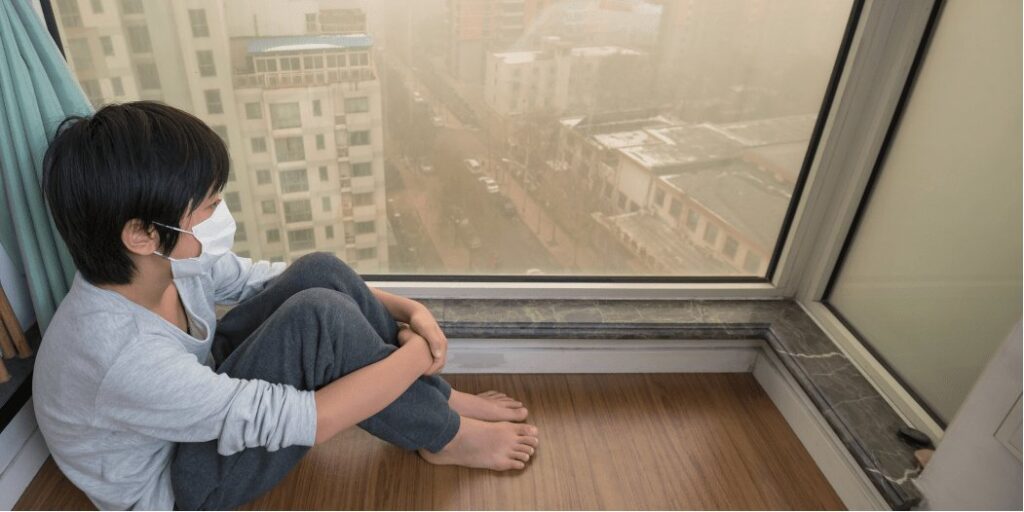

In a previous section, we described the process that you can follow to determine if you need replacement air purifier filters.
One of the steps in that section was to see whether your device is purifying the air with the same efficiency and speed as it was before.
The reason is that older air purifier filters get saturated and clogged. As a result, they don’t allow the air to pass through them. This makes the entire air purification process slower. In many cases, it even prevents the device from purifying the air completely.
Therefore, if you don’t change your air purifier filters when required, the air quality in your home will progressively get worse.
More Power Consumption and Device Wear and Tear
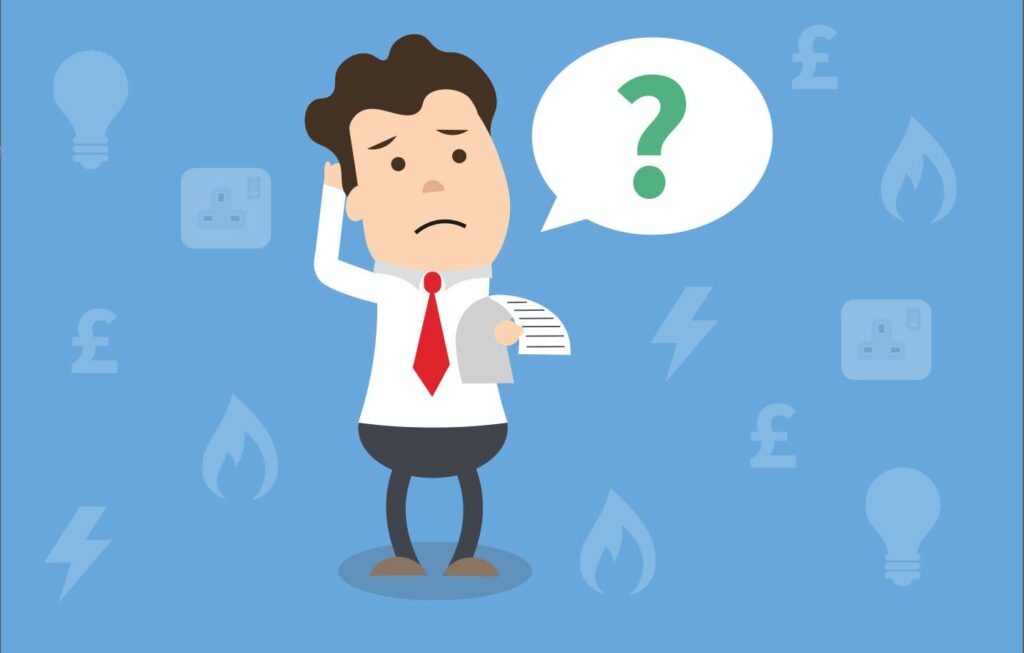

The Auto mode on most air purifiers is connected to their AQI monitor. When their monitor senses the AQI levels to be low in the room, the purifier ramps up its speed to clean the air faster.
However, what happens when the purifier senses poor quality air in the room and ramps up its fan speed, but the air quality doesn’t improve? The purifier keeps at it indefinitely.
Effectively, the air purifier consumes more power. Further, all its components such as the motor and the fan are put under undue prolonged stress. The result is that your electricity bills go up and your device breaks down faster.
This is the cascade effect of you not changing your air purifier filters when they need to be changed.
Microbial Growth and Contamination
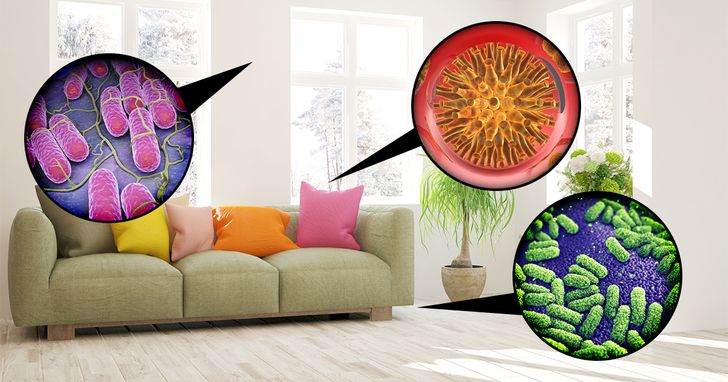

Not changing your air purifier filters will lead to health concerns too.
Air purifier filters being dirty essentially means that there are dust particles and microbes trapped within their fibers. Given time and with moisture in the air, these microbes can grow within the filters.
For instance, it isn’t uncommon for mold to grow in old air purifier filters. Mold releases spores into the air which means that your room’s air is contaminated. The same can happen with other kinds of germs such as bacteria and viruses.
How To Look for Air Purifier Filter Replacements?
This question can be divided into two parts.
The first is where you can get the replacement air purifier filters from and the second is how to find out which type or model you need.
A lot of people simply contact their air purifier manufacturer and get a service visit scheduled.
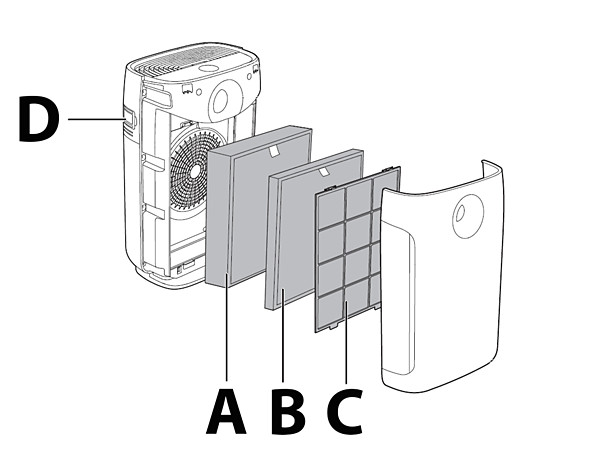

In this case, the representative comes, cleans up the device a little, and puts in an overpriced replacement air filter.
Other, smarter people go online to buy their replacement air purifier filters. However, the majority of these people search for replacement air filters by their device model.
This often results in mistakes because the search results are not always flawless. It is common for eCommerce websites and search engines to deliver “close” results instead of accurate ones.
Therefore, if you’re not careful you can end up buying the wrong filter model. The best way to avoid this is to open up your device and check the model code or number on the filter itself.
Should You Always Buy a Branded Replacement Filter for your Air Purifier?
When you search for a replacement air purifier filter with model code, your results will often include aftermarket, third-party, or “compatible” options.
Depending on what your preferences are, this can be a great opportunity or a bullet that needs to be dodged.
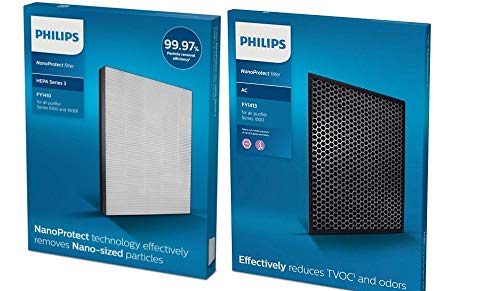

Air purifier filters are generally not patented. Patents only come into the picture if the original filter was modified in some way as is the case with Coway and Honeywell air purifiers. Coway has modified and patented its HEPA filters while Honeywell has done the same for its carbon filters.
If your device uses a patented filter, then you won’t be able to find aftermarket replacements and will have to rely on the company to get your filters. However, you can look for these filters online and still save a tiny sum.
You’ll also find it difficult to find replacements for combi filters. Combi filters combine HEPA and carbon filters. They may even incorporate pre-filters. Because of the unique nature of combi-filters and the low demand for replacements, it is particularly difficult for third-party manufacturers to produce aftermarket alternatives.
Most air purifiers, though, neither feature patented nor combi filters. You’ll find plenty of aftermarket alternatives for these kinds of filters. However, this opportunity comes with a catch.
You cannot be sure of the fitting of these third-party products. Further, you can’t even be sure of their quality. This could mean that their dimensions are off for your device or that they have a lower HEPA grade and activated carbon particles.
This is especially a problem if you buy these aftermarket devices locally. When buying aftermarket replacement air filters, it is always a better idea to look online.
The obvious reason for this is the benefit of reviews from other customers like you. Any supplier that doesn’t provide the right product will have poor ratings, which is how you can avoid them.
Even though there will always be an element of risk involved when buying aftermarket replacement air purifier filters, the savings are worth the risks you’ll be taking.
What is the Replacement Air Purifier Filter Price?
Replacement air purifier filters can cost anything from ₹1,000 to ₹5,000. The reason why we’re giving you this range is that the actual cost of replacement filters will depend on three things.
Branded Replacement Air Filters vs. Aftermarket Air Filters
Replacement air purifier filters from an Original Equipment Manufacturer (OEM) will always cost more than an aftermarket supplier, even if the item is identical.
While a filter from the air purifier company will cost you ₹3,000, you may get it from third-party suppliers for as low as ₹1,500 although ₹2,000 would be much more realistic.


So, if there’s such a huge difference between the prices, why do people continue buying from these companies? They do this because it ensures that they get the right fit and quality. With aftermarket suppliers, there’s always a risk that the filter is not the right grade or quality.
Replacement Air Purifier Filter Grade
Higher-grade HEPA air purifier filters will always be more expensive than their lower-grade counterparts.
Therefore, an H11 grade HEPA air filter will be considerably cheaper than an H14 or H13 grade HEPA air filter.
Similarly, combi filters almost always prove to be more expensive because they typically incorporate higher grade HEPA filters along with carbon filters.
However, in the long run, combi filters turn out to be cheaper because they last longer.
Individual Replacement Air Purifier Filter Vs. Replacement Air Purifier Filter Sets
Replacement air purifier filters can be purchased individually or in sets.
Typically, sellers combine a HEPA filter and an activated carbon filter into one set. As a result, the cost of a set is higher than the cost of the individual filters.
However, on a piece-by-piece basis, a HEPA filter or a carbon filter will prove to be cheaper than when they are purchased individually.
The only catch here is that the filters have different life spans and you might need one but not the other. The best way to deal with this is to use the filter you need to replace and keep the other one for when it is needed.
Best Replacement Filters for Air Purifiers of Different Brands
We know how difficult it can be to find a replacement air purifier filter, especially since many product listings on the internet are incomplete or simply inaccurate.
This is why we’ve done the legwork for you. Here are the best replacement air purifier filter options collated in terms of brand and air purifier models.
Philips Air Purifier Filter Replacements
Air Purifier Model | Branded Replacement HEPA Air Filter | Aftermarket Replacement Air Filter |
Philips AC1215/20 Air Purifier | Air Philips Air Purifier Filter-White & Black | Frenchfil French High Performance Compatible 1000 Series Filter (FY1410) |
Philips Air Purifier AC0817/20 | PHILIPS Series 800 HEPA Filter FY0194/10 | Frenchfil FY0194 Compatible For PHILIPS Series 800 Model Filter For AC 0819 / AC 0820 / AC 0817 |
Philips AC2887 Air Purifier | Philips FY2422/10 Nano Protect True HEPA Replacement Filter | Frenchfil Compatible NanoProtect 2000 Series True HEPA AND CARBON SET (FY2420 HEPA + FY2422 CARBON) |
Philips AC2958/63 Air Purifier | PHILIPS Nano Protect Filter FY2180/10 for Air Purifiers Series 2000i | |
Mi Air Purifier Filter Replacements
Coway Air Purifier Filter Replacements
Replacement HEPA Filter for Sharp Air Purifiers
Dyson Air Purifier Filter Replacements
Kent Air Purifier Filter Replacements
TruSens Air Purifier Filter Replacements
Smart Air Purifier Filter Replacements
What If You Can’t Find a Replacement Air Filter for your Purifier?
This is the biggest issue with air purifiers in India.
You do elaborate research to find the air purifier that is perfect for your home. For the next year or two, you even enjoy the fruits of your labor.
The only problem is that now that you need a replacement air purifier filter, you can’t find them anywhere.
You’ve checked online as well as with the company and they’ve told you that they aren’t available. You’ve even escalated the issue to senior management in the company and finally got them to admit that they don’t make the replacements anymore.
So, what can you do now?
You can’t simply ditch the air purifier and buy a new one. Not only would all the money you spent on the first one go waste but you’ll have to spend even more on the new one. And, who can say that that device’s filters won’t be discontinued too?
While, in the long term, you will have to write off the original sum and invest in a new device from a more mainstream manufacturer, in the short term, you do have some options open to you.
In this section, we’ll explore these options.
Repurposing Another Device’s Replacement Air Purifier Filter
If the manufacturer has stopped making air purifier filters for your particular device’s model, then you should always be able to find filters that will fit your device even though they’re from other manufacturers.
The only hitch with doing this would be clashing dimensions. Air purifier manufacturers deliberately vary their filters’ dimensions so that customers are compelled to buy replacements from them.
Unfortunately, they don’t take into account a situation where a customer is not able to buy replacement filters from them even though he wants to because they discontinued production.
As a customer, your only option in this scenario is to DIY other companies’ filters to fit your device. You can do this in two ways.
One is to fit a larger filter into your device and the other is to pad up a smaller filter into the bigger space.
If you want to fit a larger filter into your device then you’ll have to make sure that the discrepancy in dimensions is small. The reason for this is that you cannot cut into the pleats of the HEPA filter or the chambers of the carbon filter.
Cutting the pleats would reduce the efficiency of the HEPA filter while breaking the chambers of the carbon filter will cause the activated carbon particles to fall out.
What you can slice is the foam padding that most filters come with. The foam is there to ensure a tight fit and prevent air leakage. However, you can afford a little bit of leakage since the other option would be to discard the device itself.
If you don’t want leakage either, you can always get a relatively smaller filter and pad it with more foam. Simply shape and fix foam lining around the sides of the filter. As we mentioned earlier in this guide, foam lining is easily found in local hardware stores and on the internet. We’ve even linked out to them.
How to Clean Air Purifier Filter?
It’s not recommended that you clean your old air purifier filter. There are many reasons for this but two matter most.
The first is that when you clean your old and saturated air purifier filter, you’re exposing yourself to very fine pollutants that can get into your respiratory system and cause mayhem.
The second is that there’s no foolproof way of cleaning old air purifier filters. While you can get some functionality back from activated carbon filters, it is almost impossible with HEPA filters.
At the same time, if you can’t find replacement filters for your particular air purifier model and can’t even repurpose similarly sized alternatives, then you really don’t have any option but to clean the one that you have.
At the very least, this will return 25% to 50% of your air purifier’s capabilities to you. So, how can you clean your old air purifier filters?
Here are the steps for cleaning your old air purifier HEPA filter and your old carbon filter.
HEPA Filter
HEPA filters in air purifiers are very delicate. Moreover, they’re pleated so that the fabric can trap extremely fine pollutants. It is because of these two reasons that cleaning HEPA filters is not recommended.
The fine pollutants are trapped by the pleats so well that you can’t get rid of them without messing with the fabric. However, the moment you mess with the fabric, you take away the trapping capabilities of the filter.
Therefore, you want to clean the HEPA filter so you can reuse it but the act of cleaning it makes it impossible to reuse it.
This is the dilemma.
The only thing you can do is walk the knife’s edge.
Clean as much of the HEPA filter as you can without damaging its purifying capabilities. So, before we give you the procedure to follow, we would like to caution you to be VERY GENTLE at each and every step.
- Vacuuming:
- Wear a mask and take the HEPA filter out of your air purifier.
- Take the filter outdoors to avoid releasing pollutants in your home.
- Use the fabric tool of your vacuum cleaner to gently remove all the loose dust particles.
- Be aware that after the deed is done, you’ll see some stretched and pulled fibers, especially if you used high speeds. There’s not much you can do about this as cleaning HEPA filters will damage them to some extent.
- If you don’t have a vacuum cleaner or don’t want to use one, you can try gently tapping the HEPA filter to loosen and remove all the dust particles.
- Wiping:
- Get a soft cleaning rag.
(Note: We recommend using microfiber towels. All other fabrics like cotton and wool can trap and pull the fibers of your HEPA filter. This will ruin its structural integrity. If you can’t or don’t want to get microfiber rags, make sure the cloth you choose is very old and very smooth.)
- Wet the rag and squeeze out excess water, leaving it damp.
- Gently wipe the exposed surfaces of the HEPA filter.
(Note: Don’t try to penetrate the pleats too much. This can cause holes and gaps. Many times, you won’t even see them because they’re so minuscule but PM2.5 pollutants will still get through them.)
- Make sure to clean the rag at regular intervals or you’ll only be redistributing the dust.
- Drying:
- Place the HEPA filter on a flat, clean, and dry surface to dry.
- It needs to be flat to prevent the sagging of the pleats.
- Don’t place the HEPA filter in the sun or the fabric may dry too quickly and puff up affecting the pleats.
- Washing: This step is the most damaging to the HEPA filter. Therefore, we only recommend trying it if your HEPA filter is still super-dirty. In fact, some experts even say washing a HEPA filter will always result in increased airflow but reduced purification capability.
- Place your HEPA filter under cold, running, and gentle water.
- Move it around to expose all the areas of the filter.
- Gently wipe away excess water.
- Place on a dry, flat surface to air dry.
- Don’t place under the sun.
Carbon Filter
Compared to HEPA filters, carbon filters are relatively easy to clean and re-use.
The purpose of carbon filters is to capture harmful gases, Volatile Organic Compounds (VOCs), and bad odors. The activated carbon particles inside the filter are the key to this.
Activated carbon particles are essentially super-heated carbon particles. Due to exposure to heat, their molecular structure changes a little, allowing them to bond with gases of various kinds.
These molecular bonds, however, are very weak. It only takes a little bit of sun to break them. Therefore, if you place the carbon filter in the sun for 6 to 12 hours, the bonds break, and the impure gases are released into the atmosphere.
Before that, we do recommend gently vacuuming it because some dust always escapes through the pre-filter and gets trapped in the carbon filter.
Contents


































